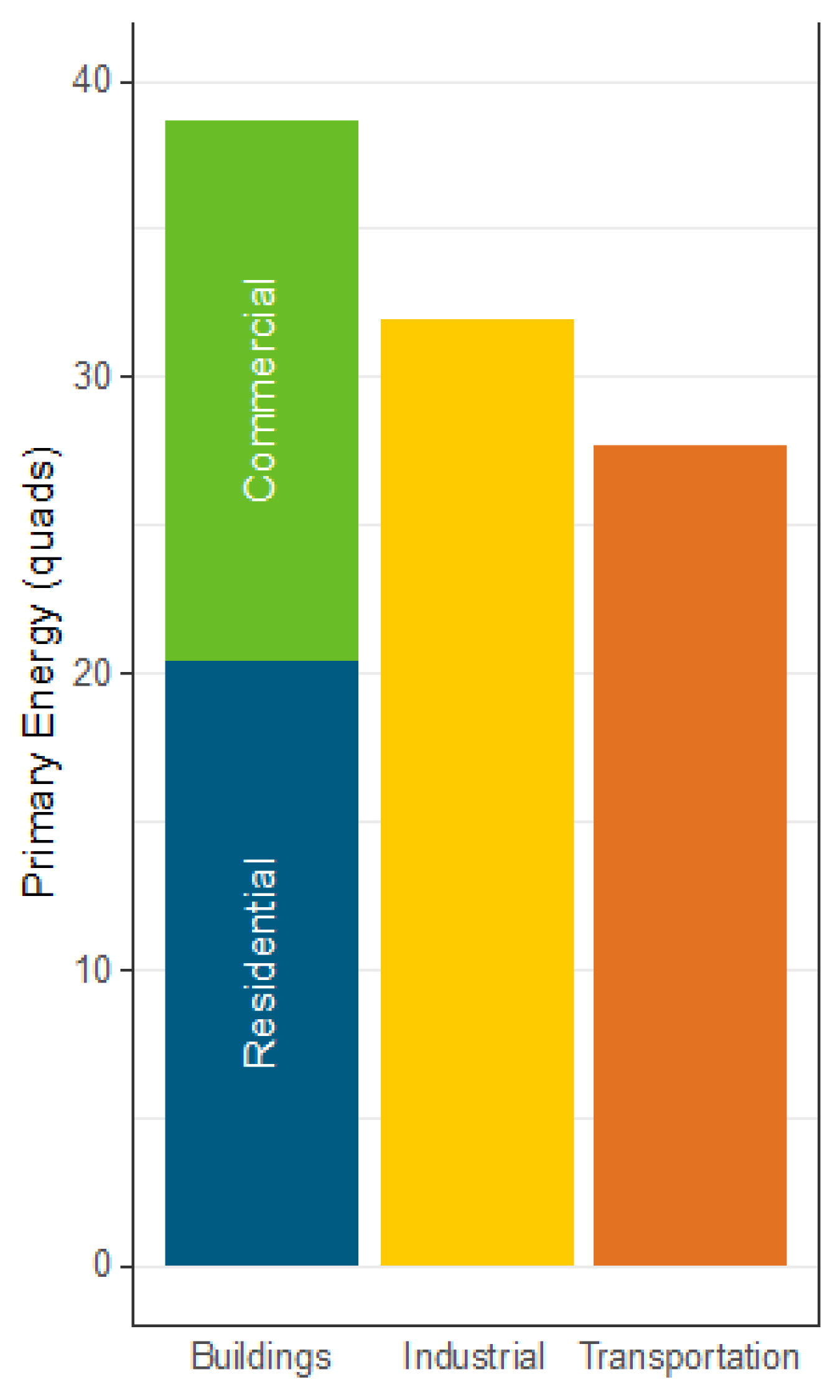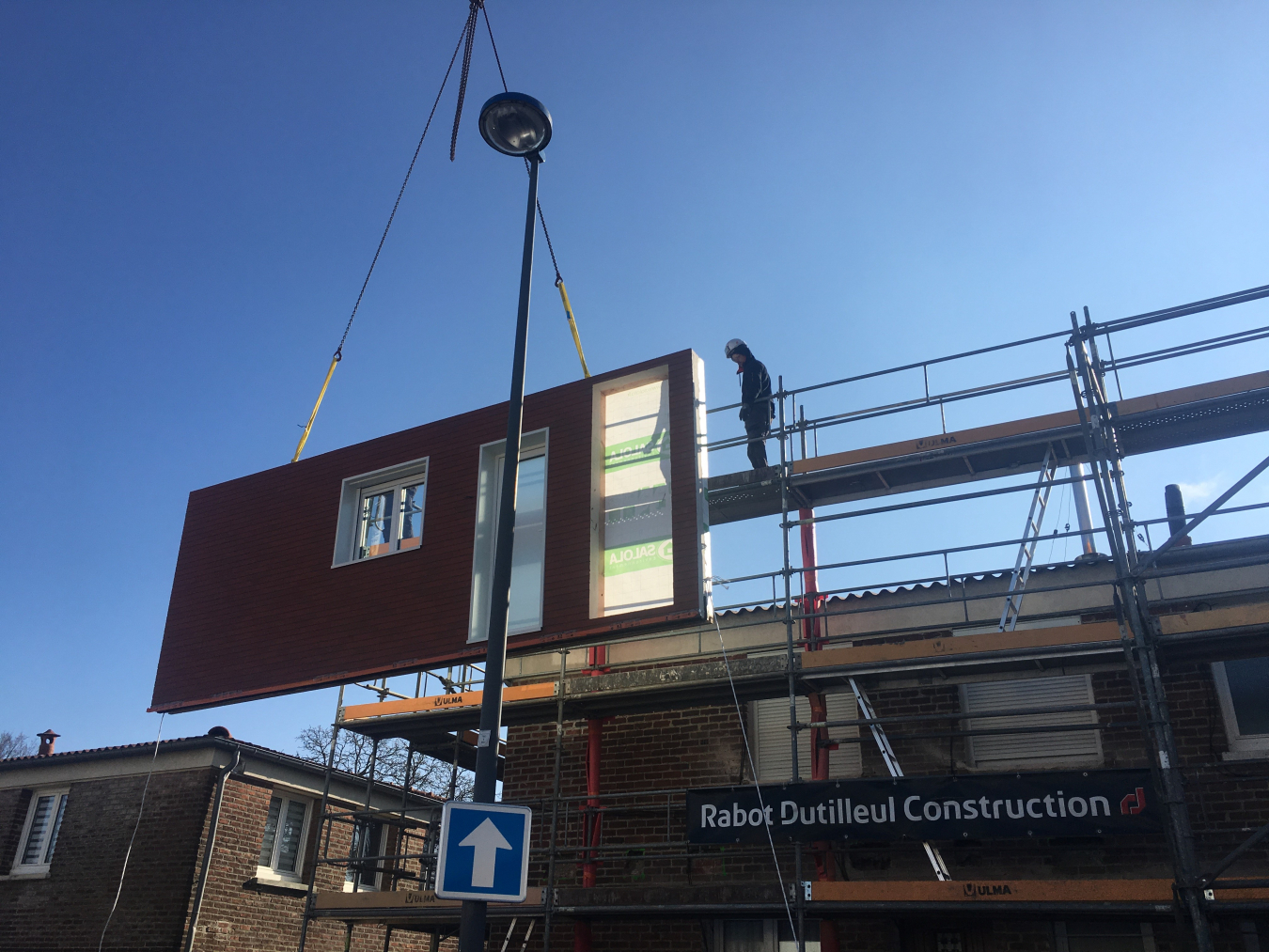With more than 90% of our lives spent indoors, buildings have a big impact on the quality of our lives.
January 28, 2020
Figure 1: Primary energy consumption in 2018 from residential and commercial buildings was greater than consumption from the industrial or transportation sectors.
Buildings play a significant role in our lives, not only as places where we eat, sleep, work, learn, and congregate, but also as reflections of our communities, our aesthetics, and preferences. With more than 90% of our lives spent indoors,1 buildings have a big impact on the quality of our lives. Yet, people tend to focus – at least initially – on the look of a building’s exterior or interior. Only after living or working in an uncomfortably hot or cold space, or getting a high utility bill, do people consider what’s below the surface.
While we spend the vast majority of our time inside buildings, the average American lives and works in buildings without the latest energy-efficiency measures. As a result, most of us do not enjoy the economic, health, and comfort benefits of high-performance buildings. Roughly 55% of U.S. homes and 50% of U.S. commercial buildings were constructed before 1980. That means that at least 65 million homes and 2.8 million commercial buildings were built prior to the existence of today's more efficient products and building construction practices.2
Buildings consume approximately 40% of the nation’s total energy usage, more than the energy used by the industrial or transportation sectors. Buildings also account for nearly 75% of U.S. electricity use, resulting in annual national energy bills totaling more than $400 billion. The good news is that technologies are readily available that can cut energy use within buildings by half or more while improving occupant comfort and well-being.3 The not-so-good news is that while simpler upgrades such as highly efficient lighting (e.g., LEDs) are common, more advanced whole-building energy-efficiency retrofits are still rare because of several barriers.
Typically whole-building retrofits cost more and have longer payback periods than single product upgrades, which makes them less financially attractive.4 Economic benefits from whole-building retrofits are also typically spread among more than one beneficiary (since the individual who pays for the upgrade will likely not live or work in the building long enough to recover their initial investment), further complicating the financial case for these deeper energy-efficiency measures. Furthermore, whole-building energy-efficiency packages often require multi-step, invasive installations that can be disruptive to building occupants, in some cases even requiring tenants to temporarily vacate. These inconveniences stop many building owners from undertaking extensive retrofits.
To help solve these challenges, the U.S. Department of Energy’s Office of Energy Efficiency and Renewable Energy (EERE) launched the Advanced Building Construction (ABC) Initiative to fund new approaches for deep energy retrofits. To jumpstart this funding, EERE’s Building Technologies Office (BTO) released the Advanced Building Construction funding opportunity announcement (FOA) in the spring of 2019. This FOA supports research and development of highly efficient retrofit solutions ranging from easy-to-install, highly efficient panelized building envelopes that act as a new “shell” that rests over the outside of a building to bundled heating, cooling, water heating, and ventilation systems and digital scanning tools that can seamlessly capture building geometries and translate that data into retrofit designs. BTO anticipates that these retrofit solutions will be able to cut thermal energy use in existing buildings by 75% or more. While driving up levels of efficiency, the ABC Initiative is simultaneously exploring how advanced manufacturing and logistics, prefabrication, and other improved productivity measures can cut costs and reduce installation times of retrofit technologies. BTO is also challenging researchers to consider the embodied energy of technology solutions so as to minimize life-cycle energy and carbon impacts.
Complementing EERE’s ABC Initiative are several projects that are already under way. The New York State Energy Research and Development Authority recently completed its first phase of RetrofitNY, an initiative aiming to scale multifamily net-zero retrofits in New York State. Through support from the DOE’s Building America program and the California Energy Commission, the Rocky Mountain Institute is retrofitting multifamily buildings in Massachusetts and California with a goal of achieving net-zero energy performance through its REALIZE initiative. As more states and cities look to reduce their environmental impact and make their buildings more resilient, we anticipate additional state and local governments to launch similar initiatives for building retrofits.
ABC retrofits are already happening throughout the Netherlands via the Energiesprong initiative. Through a combination of advanced digital scanning and panelized envelopes, Dutch companies have developed a net-zero retrofit approach that can be completed on a single-family home in as little as one day. According to Energiesprong, 5,000 housing units have been retrofitted and construction costs have dropped by 50% during the eight years of the initiative. Recently, Energiesprong expanded their approach to other European countries, with new retrofit projects in France, Belgium, Luxembourg, and the UK.

Construction of a pre-fabricated Energiesprong retrofit in Longueau, France.
Yet even with the launch of the ABC Initiative and other projects already under way, there is a long road ahead. Currently just 0.01 percent of U.S. housing units have achieved net-zero performance levels, with a similar level of penetration in the commercial sector.5 Because most of the nation’s 124 million buildings could benefit from deep energy retrofits, BTO will soon launch a new ABC Collaborative to help bring together building owners, researchers, equipment manufacturers, and others to pave the way to scaling new retrofit technologies and approaches. Through technological innovation and effective cross-sector collaboration, BTO believes that deep energy retrofits can become easy, affordable, and widely used across the country.
.......
1 N. E. Klepeis, W. C. Nelson, W.R. Ott, J. P. Robinson, A. M. Tsang, P. Switzer, J. V. Behar, S. C. Hern, and W. H. Engelmann, “The National Human Activity Pattern Survey (NHAPS) A Resource for Assessing Exposure to Environmental Pollutants.” Lawrence Berkeley National Laboratory, 2001.
2 EIA, Residential Energy Consumption Survey 2015 (RECS) and Commercial Building Energy Consumption Survey 2012 (CBECS).
3 U.S. Department of Energy, Quadrennial Technology Review 2015.
4 Pacific Northwest National Laboratory, “Advanced Energy Retrofit Guide – Office Buildings.” https://www.pnnl.gov/main/publications/external/technical_reports/PNNL-20761.pdf
5 Team Zero, “Zero Energy Inventory.” Teamzero.org

